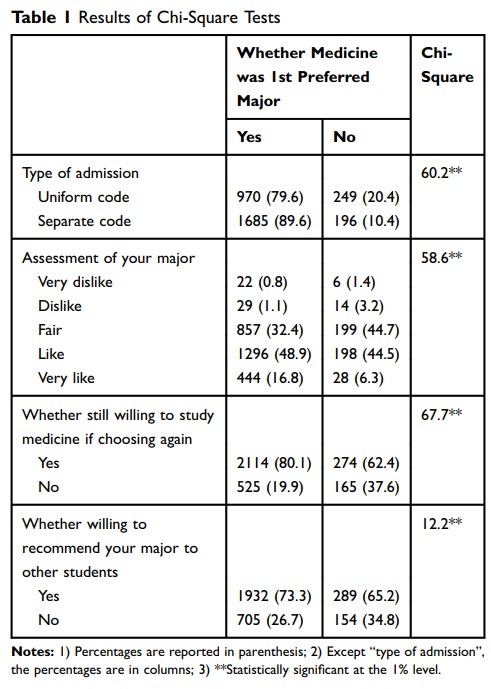9 0 5 7 8
论文已发表
注册即可获取德孚的最新动态
IF 收录期刊
- 2.6 Breast Cancer (Dove Med Press)
- 3.9 Clin Epidemiol
- 3.3 Cancer Manag Res
- 3.9 Infect Drug Resist
- 3.6 Clin Interv Aging
- 4.8 Drug Des Dev Ther
- 2.8 Int J Chronic Obstr
- 8.0 Int J Nanomed
- 2.3 Int J Women's Health
- 3.2 Neuropsych Dis Treat
- 4.0 OncoTargets Ther
- 2.2 Patient Prefer Adher
- 2.8 Ther Clin Risk Manag
- 2.7 J Pain Res
- 3.3 Diabet Metab Synd Ob
- 4.3 Psychol Res Behav Ma
- 3.4 Nat Sci Sleep
- 1.9 Pharmgenomics Pers Med
- 3.5 Risk Manag Healthc Policy
- 4.5 J Inflamm Res
- 2.3 Int J Gen Med
- 4.1 J Hepatocell Carcinoma
- 3.2 J Asthma Allergy
- 2.3 Clin Cosmet Investig Dermatol
- 3.3 J Multidiscip Healthc

大学合并对中国医科学生招生的影响
Authors Hou J, Xu M, Wang W, Kolars JC, Ke Y
Received 3 February 2020
Accepted for publication 30 April 2020
Published 19 May 2020 Volume 2020:11 Pages 351—358
DOI https://doi.org/10.2147/AMEP.S248210
Checked for plagiarism Yes
Review by Single-blind
Peer reviewer comments 2
Editor who approved publication: Dr Anwarul Azim Majumder
Objective: Mergers of health science faculties in China have resulted in two different admission pathways for medical students. A uniform-code model prioritizes admission to a specific institution with secondary assignment to major. A separate-code model prioritizes admission directly to a school within an institution. This study investigates the impact of these two admission pathways on medical student selection and on the satisfaction of students with their major.
Methods: Medical students at 16 medical schools across China completed a questionnaire survey. Descriptive calculation, chi-square tests, and probit models were used for analysing the data.
Results: A total of 3132 completed surveys were included in the analysis. Compared with the students admitted under the uniform-code pathway, a significantly larger proportion of the students admitted under the separate-code pathway had medicine as the first preferred major (89.6% vs 79.6%, p=0.000); compared with those students enrolled into medicine not as their first preferred major, a significantly larger proportion of students enrolled into medicine as their first preferred major were willing to study medicine if choosing again (80.1% vs 62.4%, p=0.000) or to recommend the major to other students (73.3% vs 65.2%, p=0.000). Probit models showed that medical students admitted under the separate-code admission pathway were more likely to choose medicine as their first preferred major at application (β=0.96, p=0.000); medical students admitted into medical school as their first preferred major were more likely to be willing to study medicine if choosing again (β=0.53, p=0.000) or to recommend the medical major to other students (β=0.18, p=0.010).
Conclusion: Separate-code admission is more likely to result in matriculants who choose medicine as their first preferred major and are more likely to be intrinsically interested in medicine than those applicants assigned to medicine from the uniform admission process.
Keywords: university merger, admission, selection, medical students, China
